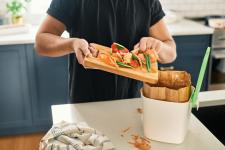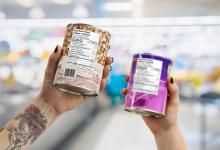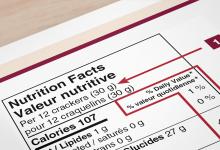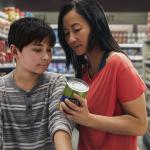The foods and drinks you choose can impact the environment. Learn how to make healthy choices for you and the environment.
On this page
Food choices and the environment
The food choices you make impact:
- your health
- the environment
These food choices may include:
- the types of foods you buy and eat
- how you use and get rid of foods
Impact of food on the environment
The impact that foods can have on the environment is influenced by:
- the type of food it is
- where it comes from
- how it is:
- produced
- packaged
- processed
- transported
An eating pattern that is higher in plant-based foods and lower in animal-based foods can decrease the negative impact of food on the environment. In general, plant-based foods use fewer resources such as land and water.
Food waste
In Canada, large amounts of food are wasted every year. Food waste can happen at all levels of the food supply system. However, almost half of all food waste happens at home. When food is thrown out as garbage, it ends up in landfills and can produce the greenhouse gas methane. Food that is not eaten also means that the land, soil and water needed to produce the food were wasted.
There are different reasons that food waste can happen at home:
- storing food improperly can lead to it going bad before it is used
- preparing too much can lead to leftovers that could go bad before they get eaten
- shopping impulsively or not planning meals can lead to buying food that is not needed
Make environmentally friendly choices
Make food and drink choices that are better for the environment. You can:
- choose plant-based foods more often
- carry a reusable water bottle with you
- use reusable grocery bags when shopping
- use reusable containers to store food and pack lunches
- look for ways to reduce food packaging in what you buy
- buy food that can be transported home in your own refillable container
- keep perishable foods in their original packaging when you store them to extend freshness
Waste less
Think about how you can reduce food waste when you are:
- planning meals and buying food
- cooking and preparing food
- storing food
- eating out
When planning meals and buying food
Plan ahead to decide what and how much food you need.
Check the fridge before grocery shopping. This can:
- remind you of food that needs to be used
- help you avoid buying what you already have
Buy exactly what you need. Stick to your list and avoid impulse buys.
Buy imperfect vegetables and fruits. In spite of its appearance, this produce is just as healthy. Buying it makes sure someone uses it instead of throwing it out.
When cooking and preparing food
Use the most perishable items first. Berries or spinach should be eaten within a few days of buying them. Apples, potatoes and carrots can last longer.
Try recipes that will help use up the leftovers in your fridge. Quiche, stir-fries, soups and casseroles all taste great with a mix of different leftover vegetables and protein foods.
Use your food scraps. Leftover turkey bones or vegetable scraps can be stored in the freezer until you have enough to make a soup broth.
Composting is another good option for vegetable and fruit scraps. Make a compost bin for your garden or check if your community has a composting program.
When storing food
Food will last longer if you store it the right way.
Put perishable foods at the front of the fridge instead of at the back. If you can see them, it will be a reminder to eat them.
If you think something might go bad before you can eat it, freeze it to use later.
Put a date on leftovers or foods you put in the freezer to remind you when you made them.
When eating out
Portions at restaurants are often too big for just one person. Split a meal at a restaurant with a friend. Sharing the food makes sure it all gets eaten and is not thrown out.
Consider bringing an empty reusable container to bring leftovers home with you.





